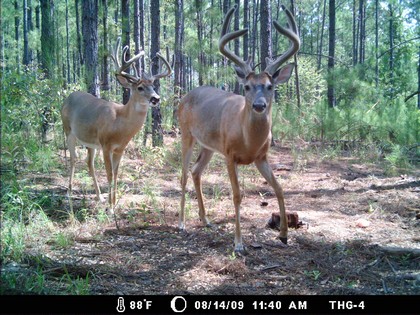Wildlife Management Topic: “Aerial Vertical-Looking Infrared Imagery to Evaluate Bias of Distance Sampling Techniques for White-tailed Deer.”
Researchers: Jared T. Beaver, Craig A. Harper – University of Tennessee; Robert E. Kissell, Jr. – University of Arkansas; Lisa I. Muller, Peyton S. Basinger, Matthew J. Goode – University of Tennessee
Deer population monitoring is an important consideration when managing white-tailed deer (Odocoileus virginianus). Distance survey sampling has been used to estimate population density, and has been applied to ground thermal infrared sensing (ground imaging) and spotlight surveys to overcome limitations with these techniques. However, surveys are usually along roads, which may violate a critical assumption of distance sampling and bias density estimates.

Aerial vertical-looking infrared imagery (aerial imaging) was designed to overcome the burdens of traditional distance surveys. We compared population and precision estimates and evaluated assumptions for each technique on Arnold Air Force Base in Tennessee during January-February 2010. Deer density (deer/mi2) and precision for spotlight and ground imaging were 60.19 (CV = 15.1) and 41.83 (CV = 13.1), respectively, with left truncation (deletion of observations closest to road), and 12.35 (CV = 13.9) and 18.10 (13.9) without truncation.
Aerial imaging density and precision estimates were 14.01 (CV = 23.1), respectively. Aerial imaging showed deer distances were closer to roads than randomly generated distances, suggesting a road-bias selection by deer, which potentially biased spotlight and ground imaging estimates high by 487% and 231%, respectively.
All precision estimates were within acceptable standards for making wildlife management recommendations. However, the high cost of ground imaging did not justify its use over spotlight surveys for deer. We found road bias can invalidate distance sampling unless random transects representative of the study area are applied. Aerial imaging is less susceptible to road bias, but it should be restricted to large areas where high initial cost can be justified.